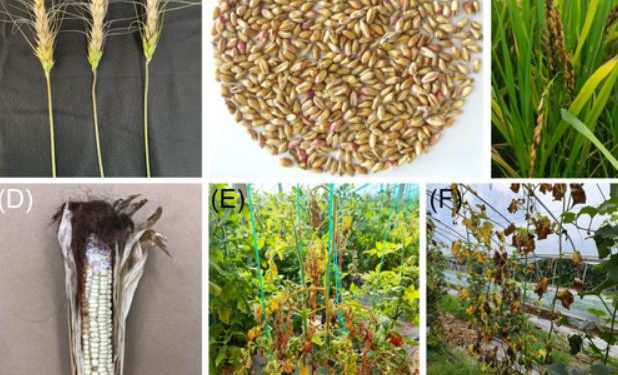Mycotoxins, which are secondary metabolites produced by toxicogenic fungi, are natural food toxins that cause acute and chronic adverse reactions in humans and animals. The genus Fusarium is one of three major genera of mycotoxin-producing fungi. Trichothecenes, fumonisins, and zearalenone are the major Fusarium mycotoxins that occur worldwide. Fusarium mycotoxins have the potential to infiltrate the human food chain via contamination during crop production and food processing, eventually threatening human health. The occurrence and development of Fusarium mycotoxin contamination will change with climate change, especially with variations in temperature, precipitation, and carbon dioxide concentration. To address these challenges, researchers have built a series of effective models to forecast the occurrence of Fusarium mycotoxins and provide guidance for crop production. Fusarium mycotoxins frequently exist in food products at extremely low levels, thus necessitating the development of highly sensitive and reliable detection techniques. Numerous successful detection methods have been developed to meet the requirements of various situations, and an increasing number of methods are moving toward high-throughput features. Although Fusarium mycotoxins cannot be completely eliminated, numerous agronomic, chemical, physical, and biological methods can lower Fusarium mycotoxin contamination to safe levels during the preharvest and postharvest stages. These theoretical innovations and technological advances have the potential to facilitate the development of comprehensive strategies for effectively managing Fusarium mycotoxin contamination in the future.
Reference: Qu Z, Ren X, Du Z, Hou J, Li Y, Yao Y, et al. Fusarium mycotoxins: The major food contaminants. mLife. 2024; 3: 176–206. https://doi.org/10.1002/mlf2.12112
Error




